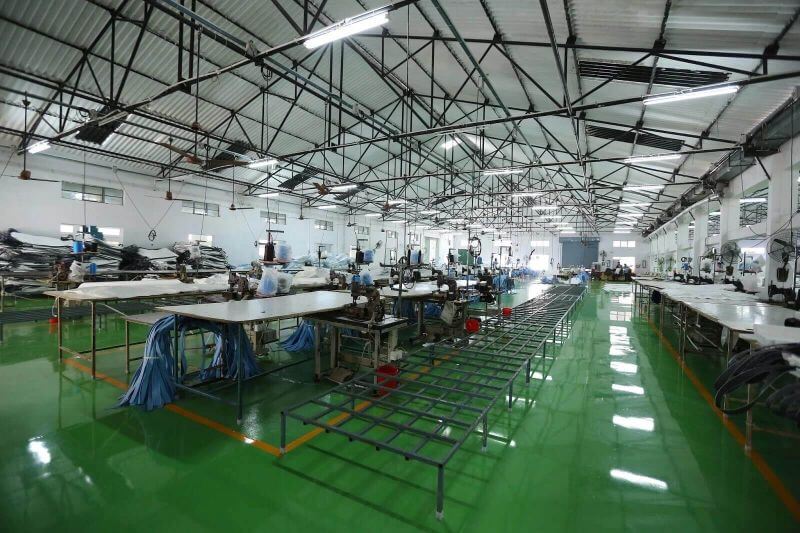



As an industrial business owner, you know the importance of choosing the right packaging for transporting and storing your goods. When it comes to moving bulk materials, two of the most popular options are bulk bags, also known as FIBCs or big bags, and bag liners or liner bags. However, determining which solution is the best fit for your specific needs can be challenging. Bulk bags provide durability and strength but often lack advanced protection from environmental exposure. Bag liners offer superior protection and containment but require an additional bulk bag to transport the goods.
In the realm of bulk packaging, choosing the right type of bag is crucial to ensuring the safe and efficient transport of goods. Each option has its own set of advantages and considerations. In this blog, we will delve into a comprehensive comparison of bulk bag liners and unlined bags to help you determine which option is best suited for your specific needs.
When transporting bulk materials, two main container options to consider are bulk bags (also known as FIBCs) and bag liners. Bulk bags, or flexible intermediate bulk containers (FIBCs), are large bags used to store and transport loose materials in bulk. Unlined bulk bags are made of woven polymer fibers, typically polypropylene, that allow for airflow while still containing the materials. For many applications, unlined bulk bags are ideal as they are durable, economical, and food-grade compliant.
However, for some materials, an additional layer of protection is required. Bag liners provide an impermeable layer inside the bulk bag to protect the materials. Common liner types include polyethylene (PE) and polypropylene (PP). Liners prevent contamination from the environment, moisture ingress or egress, and product spillage. They are ideal when transporting fine powders, liquids, or chemicals.
When determining whether to use lined or unlined bulk bags, consider the properties of your materials and how they will be transported and stored. For non-hazardous, free-flowing materials, unlined bags may suit your needs. However, for materials that require additional protection, lined bulk bags are the superior choice to prevent damage or contamination during transport and storage.
Unlined bulk bags, also known as Flexible Intermediate Bulk Containers (FIBCs) or simply "big bags," are widely used for storing and transporting various bulk materials. These bags are typically made of woven polypropylene fabric, offering strength, durability, and flexibility in handling a diverse range of products, including powders, granules, minerals, and chemicals.
For certain dry bulk materials, unlined bulk bags can provide an ideal solution. Unlined bulk bags, also known as Type C FIBCs or jumbo bags, are cheaper to produce and can hold sharp or abrasive materials without risk of liner damage.
When determining if unlined bulk bags are right for your operation, consider the following factors:
Unlined bulk bags are suitable for materials that will not damage the bag material or cause contamination. Materials like sand, soil, minerals, and plastic pellets can typically be stored in unlined bags. However, chemicals, food products, and materials with fine particles require a protective liner.
Unlined bulk bags are often the most affordable FIBC option. They do not require the added cost of a liner, keeping production costs down. For high-volume operations moving inexpensive materials, unlined bags can significantly cut costs.
The open-weave construction of unlined bulk bags allows for faster loading and unloading. The material can flow freely into and out of the bag without obstruction from a liner. This can speed up operations and reduce labor costs. However, the open weave also provides less protection from environmental contaminants.
The open-weave textile used for unlined bulk bags is breathable, allowing for good air flow. This can be important for materials that require ventilation to prevent spoilage or clumping. The breathability also allows condensation and moisture to escape, keeping the material dry.
For the right materials and operations, unlined bulk bags offer an inexpensive, high-performing solution for dry bulk storage and transport. However, due care should be taken to ensure compatibility and prevent contamination or damage when using unlined bulk bags. If in doubt, a lined bulk bag may provide safer storage for your specific needs.
Bulk bag liners are a protective or inner layer inserted into the unlined bag to offer an additional level of protection and containment. These liners can be made from various materials, including polyethylene, polypropylene, or other specialized barrier films, depending on the nature of the product being stored or transported.
When deciding between bulk bags with liners or unlined bulk bags, there are several factors to consider for your business. Using bulk bag liners provides significant benefits that can improve operations and cut costs.
Bulk bag liners act as an additional layer of protection between the product and the bulk bag material. This helps prevent small tears or holes in the bulk bag from allowing product to escape or contaminants to enter. Bulk bag liners are also designed to be chemically compatible with a wide range of products to avoid reaction. For powdered or granulated products, liners prevent the “wicking” effect where product is drawn through the bulk bag material.
Attaching bulk bag liners to unlined bulk bags allows the liners to act as handles for loading and unloading. Workers can grip the attached liners to move and position the bulk bags, reducing the risk of back strain or injury. The liners also provide extra durability and reinforcement to the bulk bags during transport and storage.
Using bulk bag liners helps keep bulk bags clean since the liners prevent product from coming into direct contact with the bulk bag material. This reduces the need for frequent cleaning and maintenance of the bulk bags which saves time and resources. Liners are also more easily cleaned or disposed of compared to bulk bags.
Overall, bulk bag liners provide substantial advantages for product protection, worker safety, and operational efficiency. For many businesses, the added upfront cost of liners is far outweighed by the long-term savings and benefits. When sourcing bulk bags, carefully consider if liners are the right choice for your needs.
The decision between using bulk bag liners or unlined bags depends on several key factors:
Consider the characteristics of the product you're dealing with, including its flow properties, potential for contamination, and sensitivity to moisture. Products that require enhanced protection and containment may benefit from using liners.
Budget plays a crucial role in determining the suitable packaging solution. Evaluate the cost implications of using liners against the potential benefits in terms of product protection and handling efficiency.
If your company prioritizes sustainability and environmental responsibility, unlined bags might align better with your values due to their reduced material usage and easier recyclability.
Certain industries or products may require adherence to specific regulations regarding packaging and product protection. Ensure your chosen packaging solution meets these regulatory standards.
Consider how the choice of bag impacts the handling, storage, and transportation of your products. Factors such as ease of filling, discharge, and compatibility with handling equipment are essential.
As you can see, both bulk bags and bag liners offer advantages for material handling, but the right choice depends on your specific needs and priorities. Bulk bags provide durability and reusability but may require an initial investment. Bag liners reduce contamination risks and cleanup but can be less economical at high volumes. By weighing the pros and cons for factors like cost, longevity, and product protection, you can determine the optimal solution for your business.
Curious to learn more about FIBC Bags?
At Virgo Polymers, we have the expertise to assist you with all aspects of FIBC bags, from finding the ideal liner to exploring storage options and applications. As one of the leading manufacturers of FIBC bags, we provide a diverse selection of bags designed for efficient material storage and transportation.
Call +91 90030 48815 to know more or email us at info@virgopolymer.com
